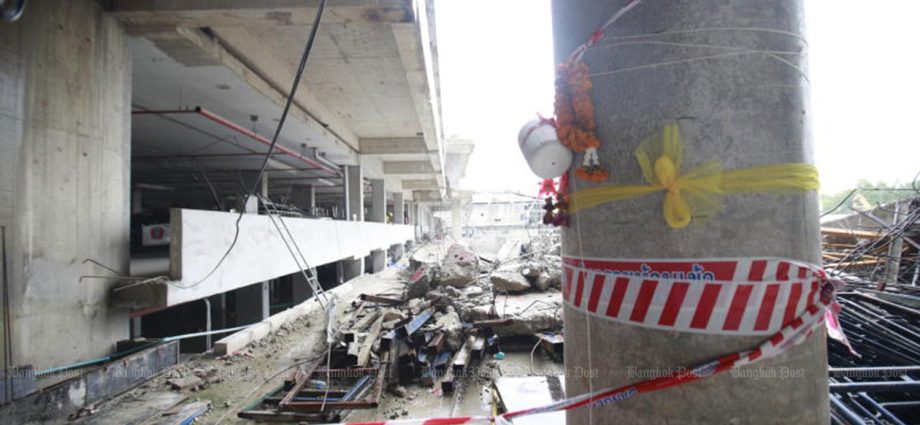House committee focuses on design of lift shaft and quality of construction materials at SAO building

An architectural firm involved in the construction of the collapsed State Audit Office (SAO) headquarters has denied making any revisions to the original design, amid an ongoing parliamentary investigation into the tragedy.
Representatives of Forum Architect Co Ltd and Meinhardt (Thailand) appeared before the House Committee on Corruption Prevention and Suppression to explain their roles in the project.
The committee, chaired by Pheu Thai MP Chalad Khamchuang, is examining possible construction irregularities following the building’s collapse during the March 28 earthquake, which have raised suspicions of a structural failure linked to design changes to the elevator shaft.
The 30-storey building in Chatuchak district was the only high-rise in Bangkok to collapse when the earthquake struck. Of the 109 workers who were on the site that day, 89 have been confirmed dead and seven are still missing.
Theerachai Phanthumas, the deputy chairman of the committee, questioned the companies over design changes that may have weakened the structure.
Forum Architect’s managing director, Suchat Chutipabhakorn, insisted his firm never submitted revised plans after the design was approved.
He said that while the contractor and site inspector sought advice during construction — particularly about decorating the lift shaft with marble cladding — no formal changes were made to the approved design.
His firm consulted Meinhardt regarding this request, resulting in a suggestion to reduce the wall thickness in some areas. However, Mr Suchat said this was only a suggestion and was never carried out by the architect.
Meinhardt (Thailand) director Theera Wattanasup said his company recommended reducing the wall thickness by five centimetres to accommodate interior finishes, along with corresponding structural reinforcement.
He said Meinhardt had no authority to order design changes and did not know whether their suggestions were carried out. He said that only the SAO, as the project owner, could approve alterations.
Engineer Pimol Charoenying, 85, who certified the original design, said he signed the final drawings in his capacity as design consultant and had never been shown any revised versions.
The committee also raised concerns about material quality and the potential use of substandard steel and concrete. Concerns have arisen over whether the tested batch of quality steel was actually used in the work, raising suspicions of cost-cutting amounting to 300 million baht, said Mr Chalad.
Questions remain over whether proper technical oversight was in place and whether payments were authorised according to procedure, he added.
The committee plans to summon the former head of the SAO , who originally managed the contract, to clarify why no oversight action was taken and whether design changes, if any, were formally approved, he said.

